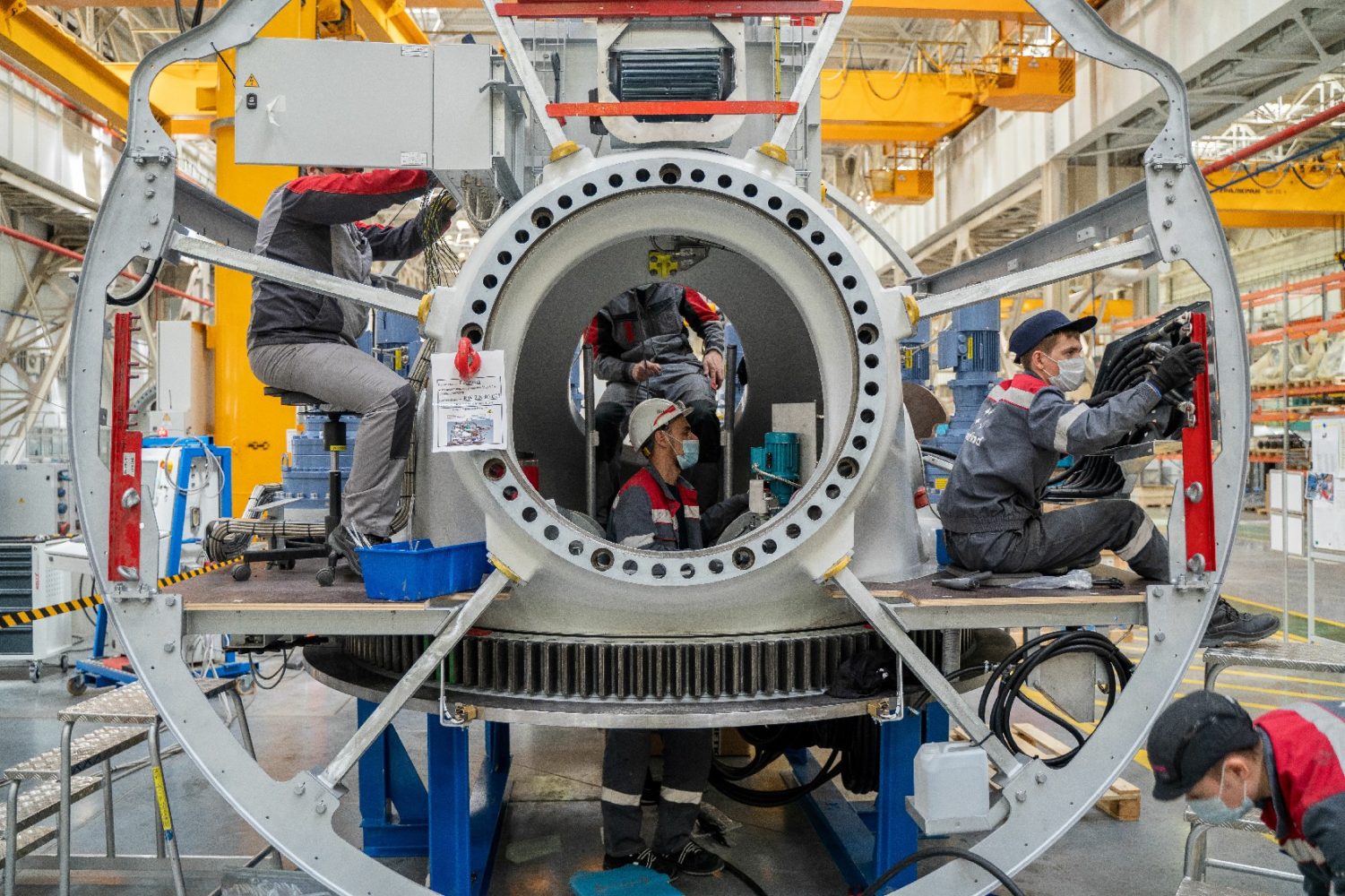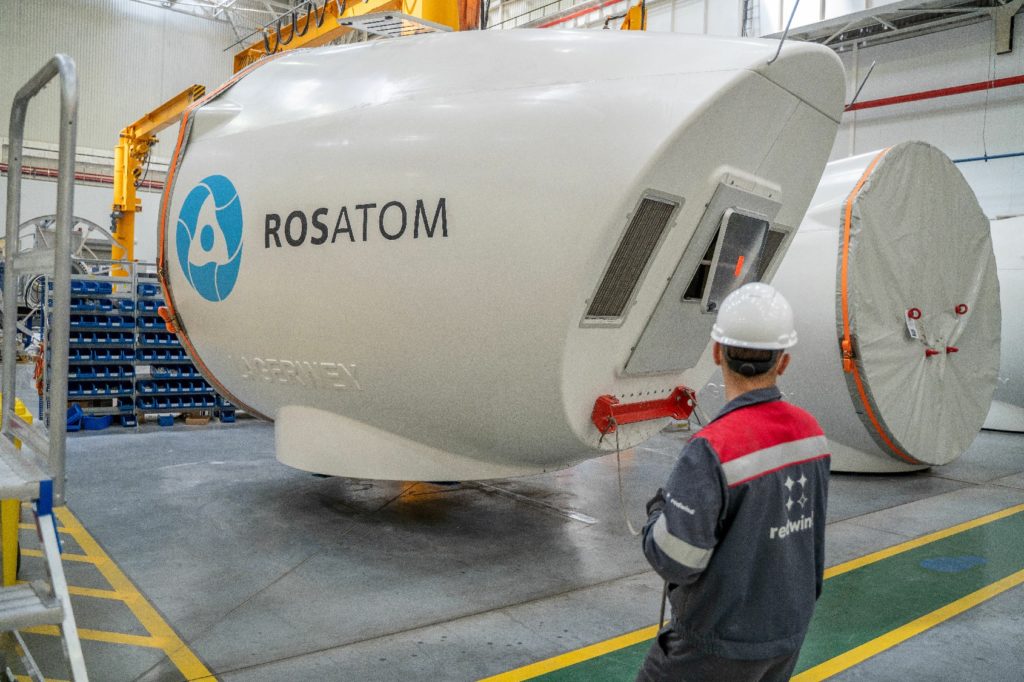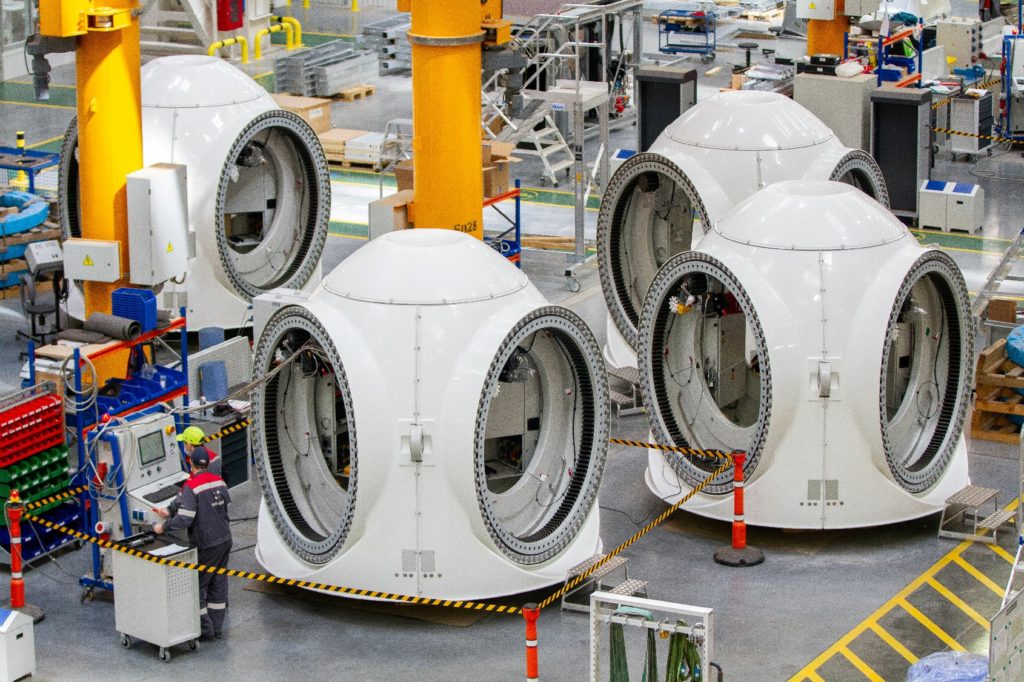
Rosatom Catches Tailwind
back to contentsRosatom’s wind power division diversifies the portfolio of low-carbon energy solutions offered by the Russian nuclear corporation. Having started as a local manufacturer of wind power equipment, the division is now entering foreign markets with its own products.
Rosatom established its wind power division in September 2017 to span three areas of business operations. First, the division is engaged in the construction of wind farms, from obtaining permits and design engineering to commissioning. Second, it is involved in the operation and maintenance of wind farms and the sale of electricity, including under the green certificate scheme. Third, it manufactures parts and components for wind turbines. Thus, Rosatom accumulates all the key competencies required for the comprehensive development of wind energy in the country.
New build
Rosatom is a major player of Russia’s wind power market. The state corporation has built and is operating nine wind farms in the southern regions of the country. The most recent example is the commissioning of the second 35 MW section of the Trunovskaya Wind Farm, which supplied its first electricity to the national power grid in March 2024. The total capacity of Rosatom’s wind power plants has reached 1,035 MW.
Preparations are now underway to build a 300 MW Novolakskaya Wind Farm in the Republic of Dagestan. Construction is expected to begin later this year. Rosatom’s installed wind power capacity will grow to 1.7 GW by 2027.
Operation and maintenance
Rosatom sells electricity generated by its wind farms to environmentally responsible consumers, adhering to sustainable development principles. Notably, the company has entered into power purchase agreements with firms within Sibur Holding and the Delo Group.
In February this year, the companies of the wind power division joined the Russian system of energy attributes and guarantees of origin. The certificates issued through the system specify the source of generation and the volume of electricity generated, thus providing a guarantee that electricity was obtained from renewable sources.
Production of components
Wind turbine components are manufactured at Rosatom’s production site situated in Volgodonsk. It is there that hubs, nacelles, generators and cooling systems for wind turbines are produced. The plant is capable of manufacturing up to 120 turbines per year; its design capacity was reached in 2020.
Rosatom produces direct-drive generators — they are simpler, more reliable and cost-effective due to lower breakdowns and power losses, which is particularly important at medium wind speeds (predominant wind conditions in Russia).

Rosatom also intends to set up production of wind turbine blades. Its composite materials division is expected to manufacture the first blades of about 50 meters long by the end of this year. The plant’s capacity will be 450 blades per year.
Rosatom is also working to establish the production of permanent magnets used in wind turbine generators. We wrote about it in more detail in the previous issue of our newsletter.
To automate the control and management of wind farm operations, the wind power division has developed proprietary software that allows for real-time data collection from each wind turbine for prompt response and analysis.

In addition, Rosatom is building local supply chains involving nearly 70 Russian companies that manufacture wind turbine towers, nacelle covers and frames, rotor and stator laminations, and other products.
Entering new markets
Having gained comprehensive competencies from wind power projects in Russia, Rosatom proposes to build renewable generation facilities in other countries, thus contributing to their energy sovereignty.
Rosatom’s international renewable energy program provides for up to 5 GW of new capacity to be built abroad by 2030. The key destinations for the program are the CIS countries, Vietnam, Myanmar, and Turkey.
At the Atomexpo 2024 forum held in March this year in Sochi, Rosatom and the Ministry of Energy of Kyrgyzstan signed an agreement to develop an investment project for the deployment of up to 1 GW of renewable power generation capacity in the country. The implementation of this agreement started with a pilot wind power project in the Issyk-Kul Region. By now, archaeological and geological surveys have been completed on the site, and wind measurements are currently in progress. Preparations are underway to develop the engineering design for the wind farm, and the first steps have been made to negotiate and sign an investment agreement with the Kyrgyzstan Cabinet of Ministers. At the second stage, the parties plan to assess other sites for the deployment of up to 900 MW of renewable capacity. The joint energy projects will improve the quality and reliability of power supply for end consumers and diversify the country’s energy mix.
In 2023, a memorandum of intent was signed with Myanmar’s Zeya & Associates at the Saint Petersburg International Economic Forum to carry out a 200 MW wind farm project in the Mandalay region in Central Myanmar. A wind measurement system was installed in late 2023 to assess wind conditions at the selected sites. A pre-feasibility study for the project was drafted and then approved by the Myanmar Ministry of Energy. Earlier this year, the wind power division started negotiations on the terms of electricity supplies with the Myanmar Ministry of Energy. The project will improve local energy security and increase the share of green energy in the country’s energy mix.
“Rosatom is interested in renewable energy projects in the countries that are friendly to Russia. We have all the competencies required to build and operate wind farms,” the head of Rosatom’s wind power division Grigory Nazarov says with confidence.




